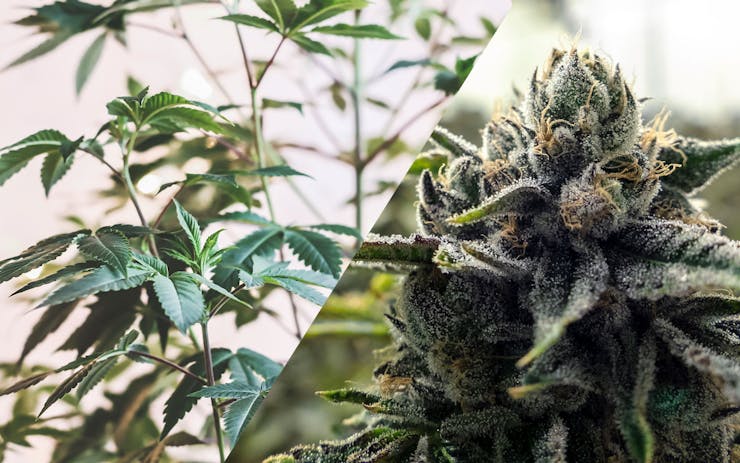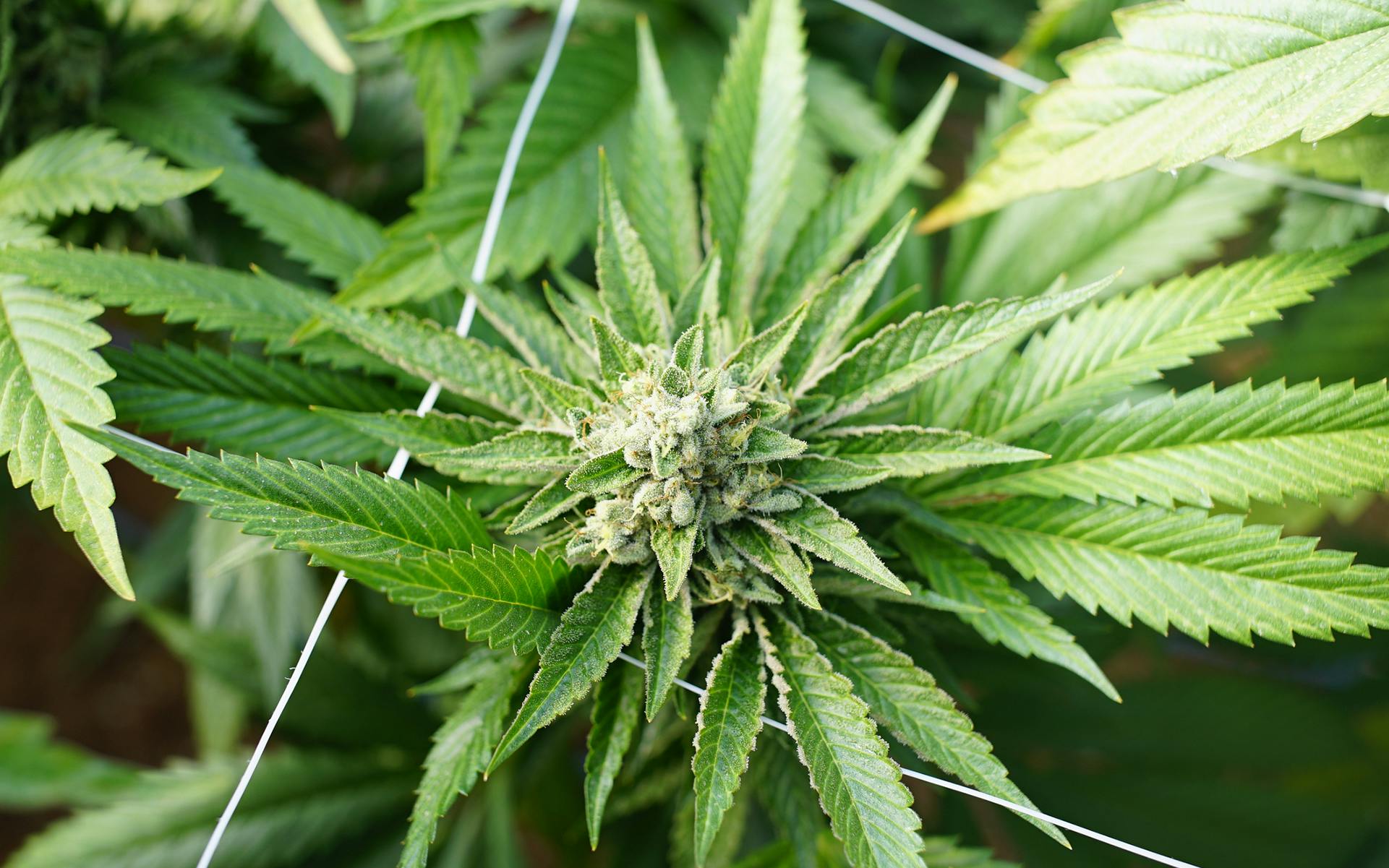There’s nothing like having your own freshly harvested cannabis whenever you want. Growers can make this happen by maintaining a garden year-round through a system known as a perpetual harvest. The idea behind it is to cut down a little bit of cannabis many times throughout the year as opposed to harvesting one big batch once a year. Depending on how you set it up, you can harvest cannabis every week, two weeks, month, or any other interval that you like.
Perpetual harvesting can benefit both the homegrower and the commercial grower. It allows both the ability to look after and control their plants better through each phase of the growing process. Commercial growers can also manage their labor needs and operations easier by providing consistent work on a weekly or monthly basis, instead of having to bunch up labor when planting a crop and harvesting it with a seasonal grow.
What Qualifies as a Perpetual Harvest?
Indoor perpetual harvesting is a horticultural design system that maintains a steady rotation of crop through the different phases of the cultivation process. With cannabis, plants in different phases—seedlings, vegetative, flowering—have different photoperiods, meaning that you’ll need separate spaces for plants in each phase because they need different durations of light.
Maintaining a perpetual harvest is all about timing. When a set of plants is done flowering and ready for harvesting, you’ll replace them with a set of plants from the vegetative stage. Plants moved from the vegetative stage will, in turn, be replaced by clones or seedlings. And as those clones or seedlings replace the veg plants, you’ll take more clones or grow more seeds, and so on, cycling plants through the whole process like a revolving door.
Spaces Needed for a Perpetual Harvest
You’ll need separate spaces for each phase of the growing cycle. Make sure each space is light-tight so light from one space doesn’t affect plants in other spaces. Also, make sure that plants continually get the right amount of light in each phase. If you use timers, be sure to check them periodically to make sure they are functioning properly.
You don’t want plants in a certain phase to receive more or less light than they need because it will disrupt their ability to grow. Vegetative plants that receive too little light will start flowering early and flowering plants that get extra stray light can revert back to a veg state.
Although clones and seedlings are on the same photoperiod as plants on a vegetative light cycle, growers usually have a separate space for them because they’re more delicate and need to be looked after more closely.
Clones/Seedlings Space—18 hours of light/6 hours of dark Photoperiod
These love warmth and high humidity and require very little space compared to plants in the veg and flower phases because of their small size. You can have a separate closed-off space for them or just keep them in your vegetative space.
Clones and seedlings should have their own light, which is directly over them—small T5 fluorescent lights will be sufficient. If using clones trays, put heat pads underneath for added warmth and humidity domes on top to keep in moisture.
Vegetative Space—18/6 Photoperiod
Your vegetative area can be a little smaller than the flower space, as they won’t be as big as flowering plants. T5 fluorescent lights will work well, but high-powered lights like LEDs or HIDs may be more useful for facilitating explosive growth.
At this phase of the growth cycle, your plants will also need fans to provide airflow throughout the space.
Flowering Space—12/12 Photoperiod
Reserve the largest grow space and most powerful lights for the flowering space. It’s imperative to keep this space and the vegetative space separate and light-tight as the amount of light changes. HID, HPS, LED, and CFL lights are all solid options to give plants the light and energy they need to mature and produce buds.
Plants in this stage will also require fans to create airflow within the space, as well as inline and exhaust fans to bring clean air into and out of the space. Fan filters are also recommended.
The Good & the Bad of Maintaining a Perpetual Harvest
Operating a perpetual harvest year-round isn’t for everyone. It requires more time and planning than a seasonal grow and creates constant work throughout the year. But if done correctly, there are many benefits.
Pros
- You can have freshly harvested cannabis throughout the year. How much and how often depends on how you scale the operation.
- The workload is spread out more evenly over time. You won’t have to hire a bunch of trimmers for the fall harvest when everyone else is looking for them.
- Mitigating a garden catastrophe is more manageable. You can reset your garden easier with a minimal loss of the crop.
- Perpetual harvests give the grower more control of plants in each phase of growth.
Cons
- Perpetual harvests require constant attention and careful management at all times, throughout the year. Planning time away from the garden can be difficult.
- Not all strains are suitable for perpetual harvests—some varietals need more time or more physical space than others, which can disrupt the steady flow of plants through the process.
Tips for Perpetual Growing
Several factors can easily make or break the success of perpetual cannabis harvesting. Maintaining plants in each phase and preparing each for the move into the next step is a delicate balance. Here are some factors to consider before setting one up.
Timing
It’s crucial that plants are ready to transition phases at the right time or else the flow will bottleneck. You’ll have a number of plants at different stages of growth, so knowledge of each growth stage is critical. Plants develop at different rates because of a myriad of factors, including:
- Plant genetics
- Environmental factors (temperature, humidity, light spectrum, airflow, CO2 exposure)
- Feeding/nutrient schedules
- Root health
- Plant training
Genetics Management
Every cultivar grows differently. Some varietals grow tall and lanky while others are squat and bushy. Certain strains also take longer to mature and flower than others. This information is important to know ahead of time so that you’ll have a sense of what kind of space you’ll need and how to time everything, especially when growing multiple strains.
Data Collection
Staggering plants within a perpetual system requires keen awareness of each element of the entire operation. Track progress by taking notes on:
- Rooting time for fresh clones
- Environmental factors, such as temperature, humidity, light intensity
- Vegetative growth milestones
- Plant training dates and procedures
- Flowering times
- Watering and nutrient schedules
- Transplant dates
- Troubleshooting, including pest management, deficiencies, environment anomalies







